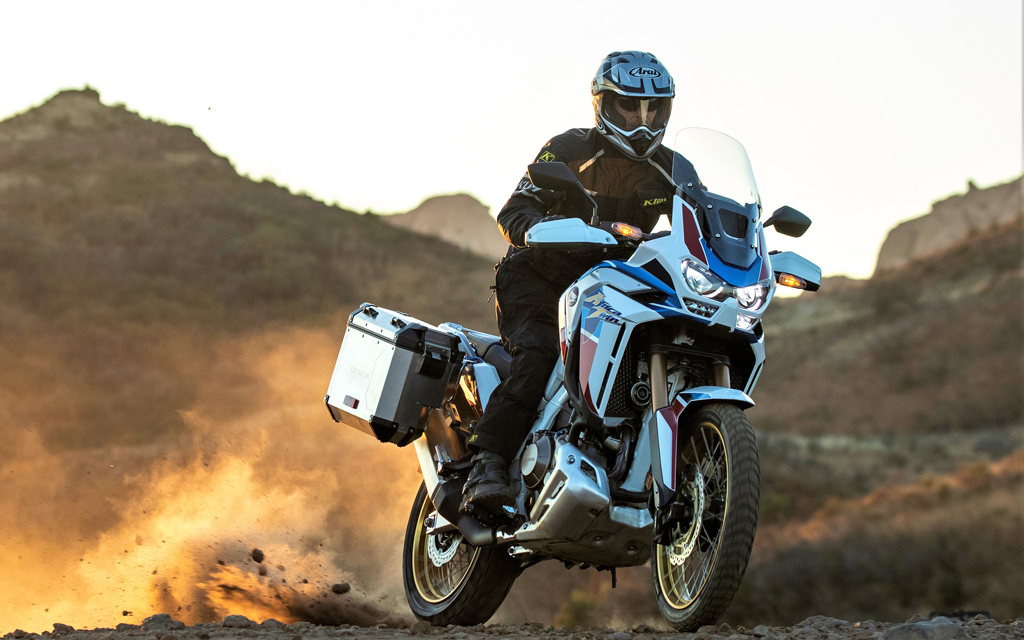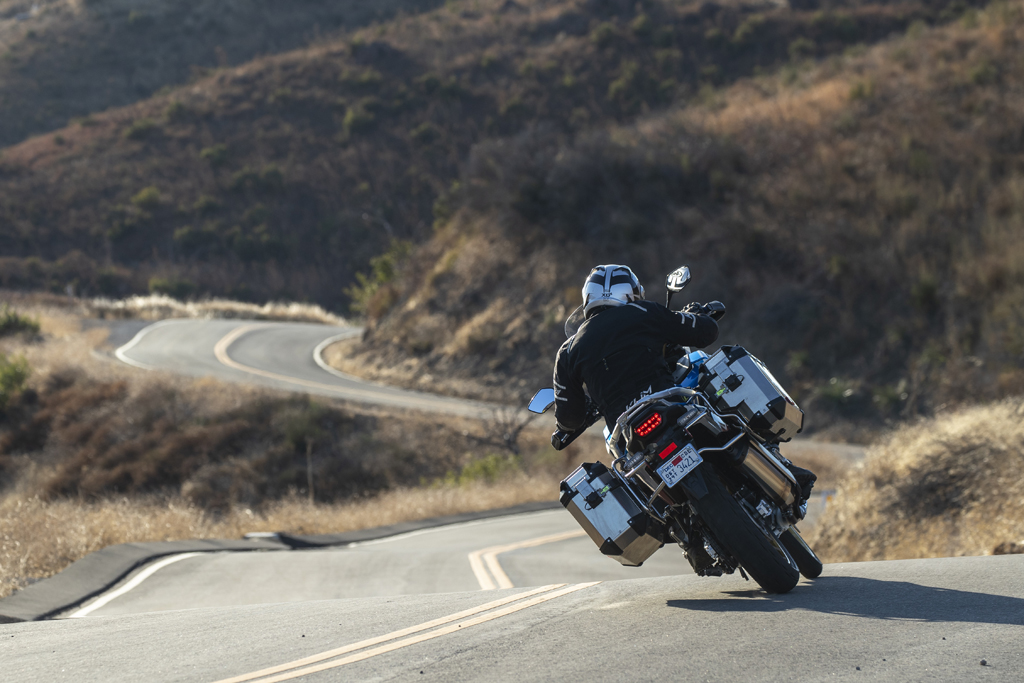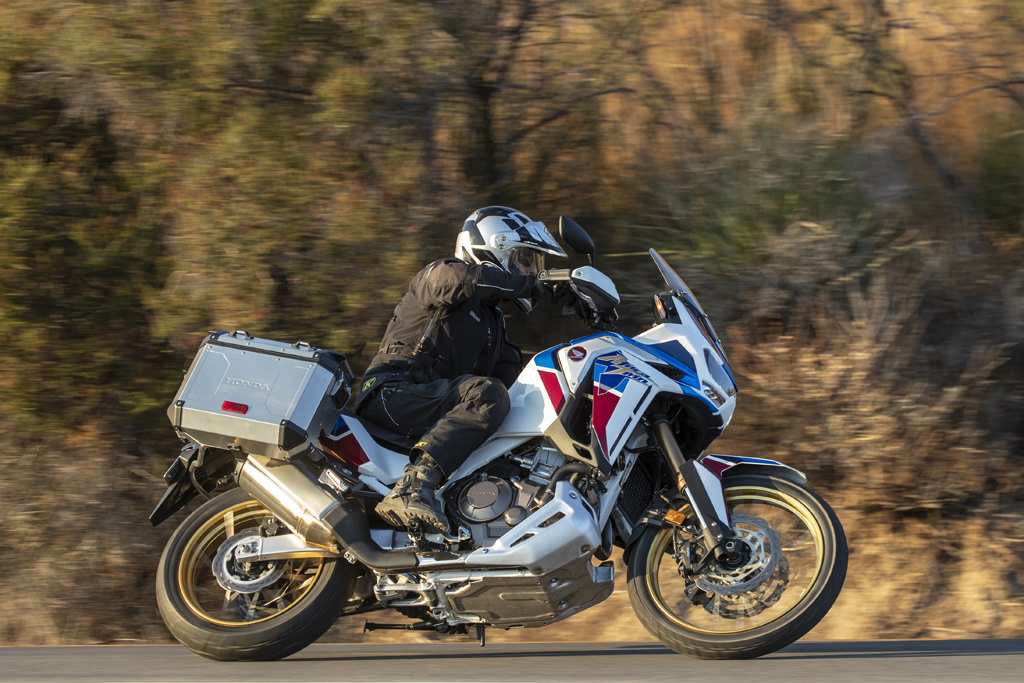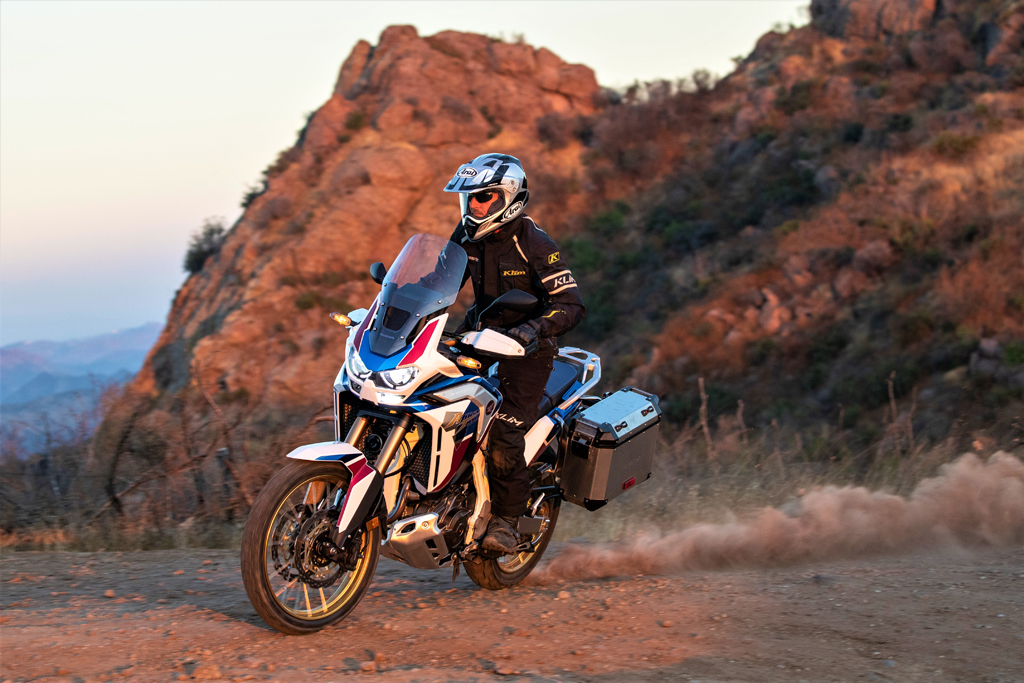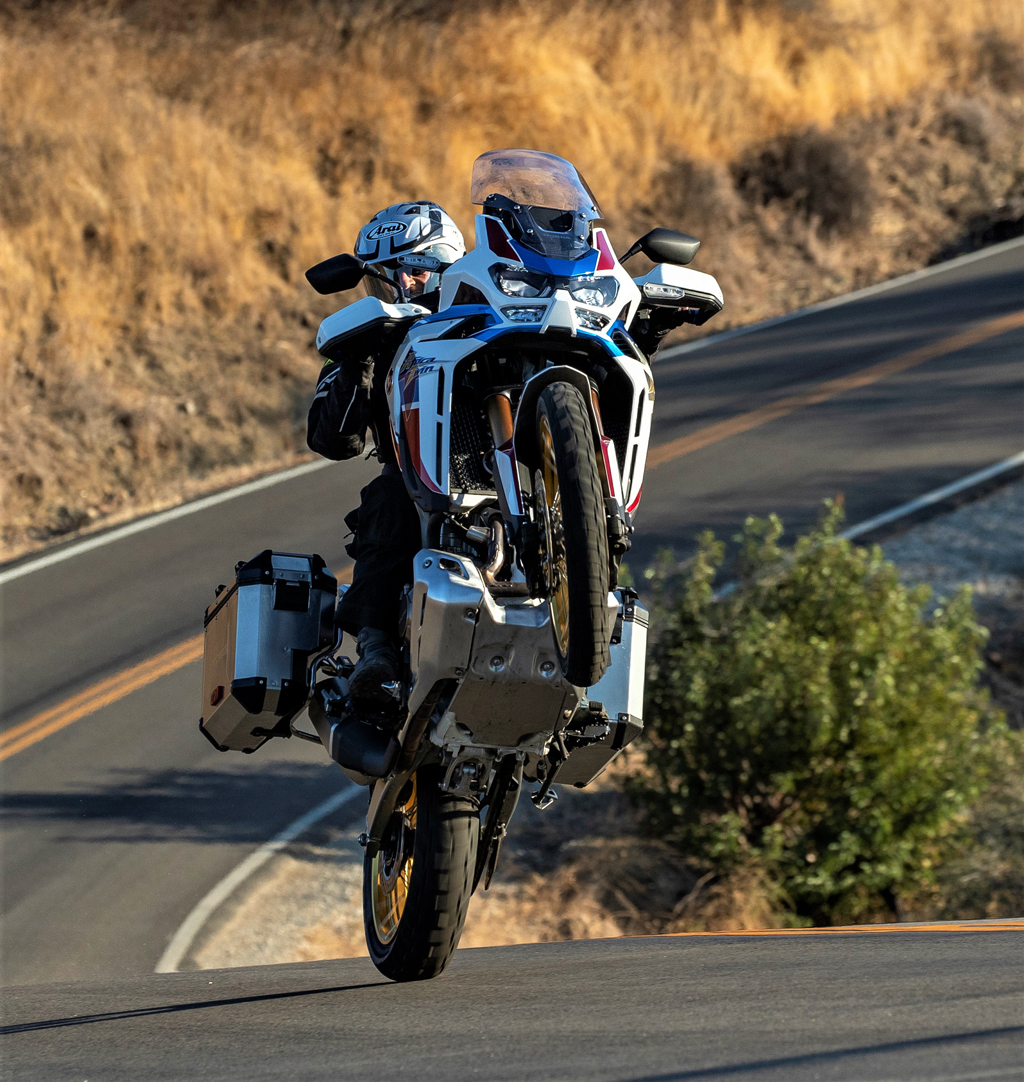HIGH-END ADVS AREN’T JUST FROM EUROPE
UPDATED AFRICA TWIN IS SERIOUS COMPETITION
When the Africa Twin was introduced in 2016, it excelled at being capable in off-road situations but fell short of its European rivals in terms of features, technology and long-haul comfort. But Honda has continued development on the amiable AT, culminating in the feature-rich Adventure Sports version tested here.
For 2020, both Africa Twin models received substantial updates, including a larger engine and the addition of a six-axis inertial-measurement unit (IMU) that endows the AT with all the latest electronic rider aids like cornering ABS, wheelie control, sophisticated traction control, and LED headlamps with auxiliary lights that shine into corners when the bike is leaned over.
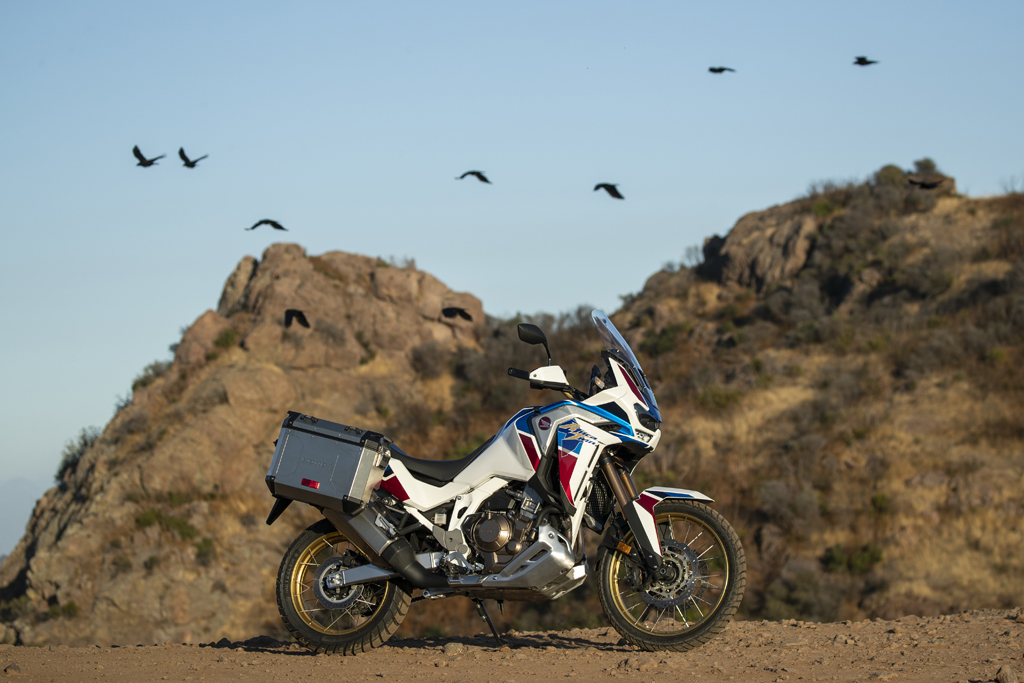
Honda has made efforts to further distinguish the two A-T models, with the standard version intended for “sporting and off-road use.” The Adventure Sports ES version tested here skews toward travel capability, with a generously sized 24.8-litre fuel tank, a larger front fairing, and an adjustable windscreen.
Other desirable features of the AS model include an aluminum skid plate, a rear luggage rack, wire-spoke wheels with tubeless tires, and semi-active electronically controlled suspension. Also included as standard equipment are cruise control, self-cancelling turnsignals and heated grips. Shorter riders will enjoy a lower seat than the standard AT, adjustable between 850 mm and 870 mm.
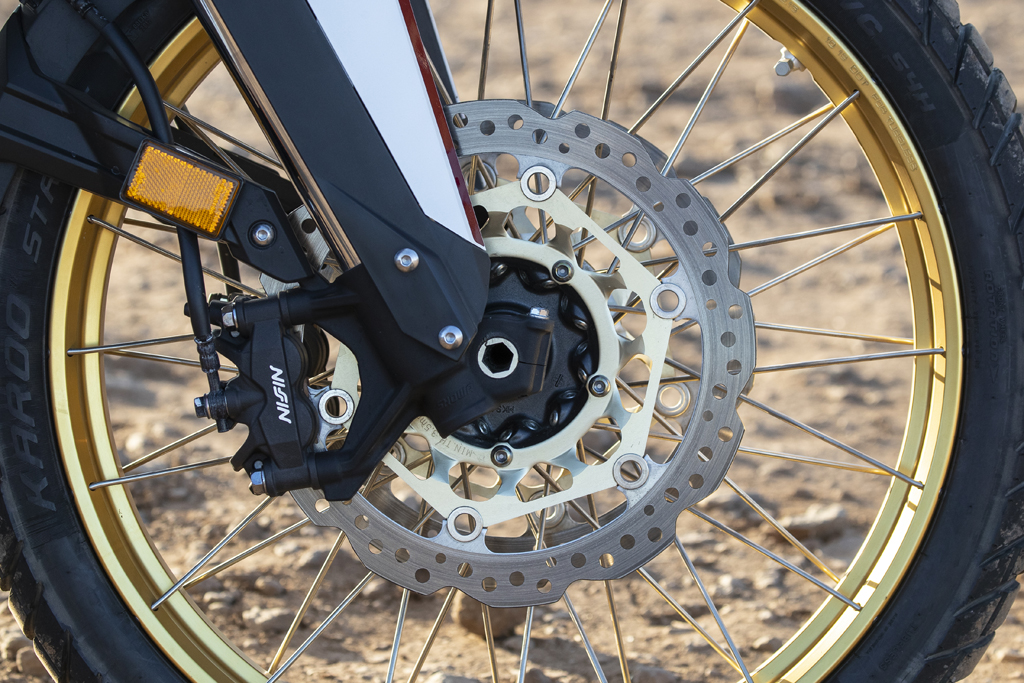
Africa Twin riders are greeted by new 16.5 cm colour touchscreen instrumentation that looks terrific and has Apple CarPlay compatibility. Handlebars are nearly 25 mm taller. Under the skin is an updated frame, a new aluminum rear subframe, and a new aluminum swingarm, helping, along with a lithium battery, shed a few pounds.
It didn’t take me long aboard this new Africa Twin to get my impressions recalibrated from my experience with the first-gen version, which I rated highly but recognized its shortcomings relative to other high-feature players in the ADV realm.
Honda has always excelled at producing motorcycles that are intuitive to ride from the first turn of the wheels, and the Africa Twin ably follows that legacy. Clutch take-up is deft, gear shifts are faultless, and the 240 kg machine (with its prodigious 24.8 litres of fuel) responds with natural deftness. Braking is provided by radial-mount four-piston calipers with 310 mm petal-style rotors up front working with cornering ABS.
The 86 cc-larger engine elevates the AT’s game, offering punchier response from the 1,084 cc parallel twin. Honda claims a seven percent power increase, and most of that boost stretches across the entire rev range. In its most aggressive throttle setting, the motor responds with eagerness and vigour. Power is accompanied by a pleasantly loud bark, surprisingly so for a typically conservative company like Honda and compliance with Euro 5 regulations. Its 270-degree crank arrangement sounds nearly like a V-twin.
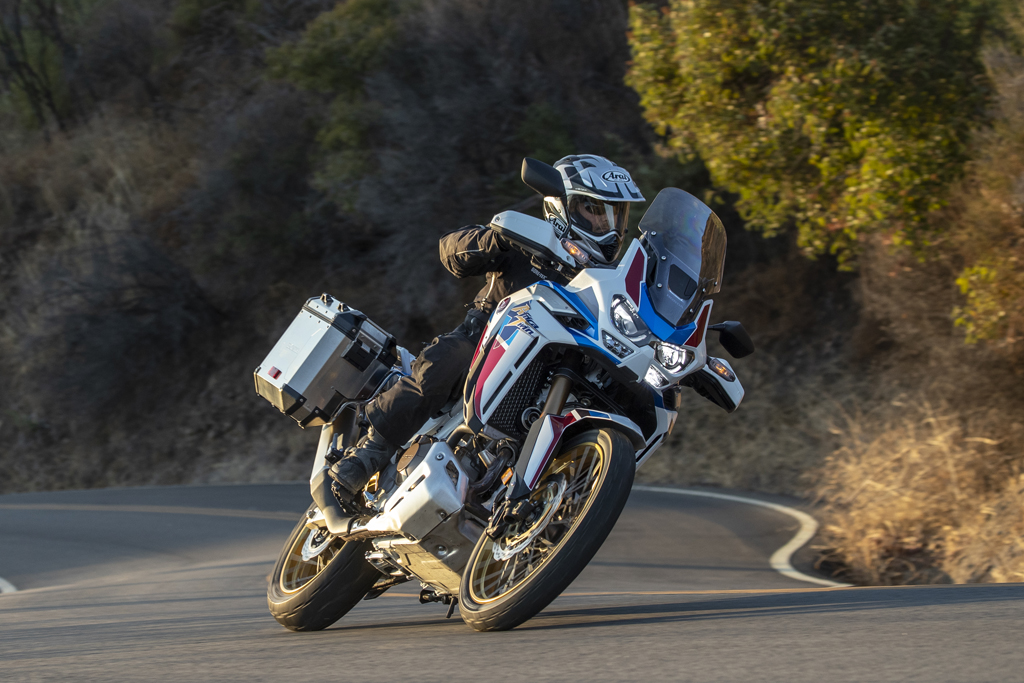
Showa’s Electronically Equipped Ride Adjustment suspension underpins the Adventure Sports ES. This semi-active suspension has the ability to dramatically transform how the bike responds in different situations, depending on the ride mode selected and the preload settings.
I began testing in the Tour ride mode and was impressed by the control offered. Chassis pitch was minimal despite the lengthy 204 mm and 220 mm of front and rear suspension travel, while bump absorption was compliant. When I ventured onto some dirt trails, I switched over to Off-Road mode and felt the suspension working deeper through its stroke while ably sucking up bumpy terrain. The Africa Twin retains its enviable manageability when ridden on the dirt, feeling like a smaller bike than one with nearly 1100 cc.
Then, once back onto a twisty paved road, I was shocked by how the Off-Road setting made the chassis much more pitch sensitive, diving dramatically when braking. A couple of button pushes changed back to Tour mode, and the CRF converted back to a willingly adroit cornering carver. Yet another example of how a semi-active electronic suspension is especially beneficial on a long-travel adventure-touring motorcycle. Urban, Gravel and two customizable User settings are the other rider modes.
Electronic preload adjustment further aids dialing in the ideal setup for a variety of rider and luggage weights with a couple of button pushes. Damping settings are tied to ride modes, so they can only be individually set in the customizable User mode, and the same goes for Engine Brake Control that alters the amount of compression braking with the throttle closed. Happily, traction control and wheelie control can be set independent of ride modes, and both can be switched off if desired. Controls are via quality-feeling switchgear and the touchscreen.
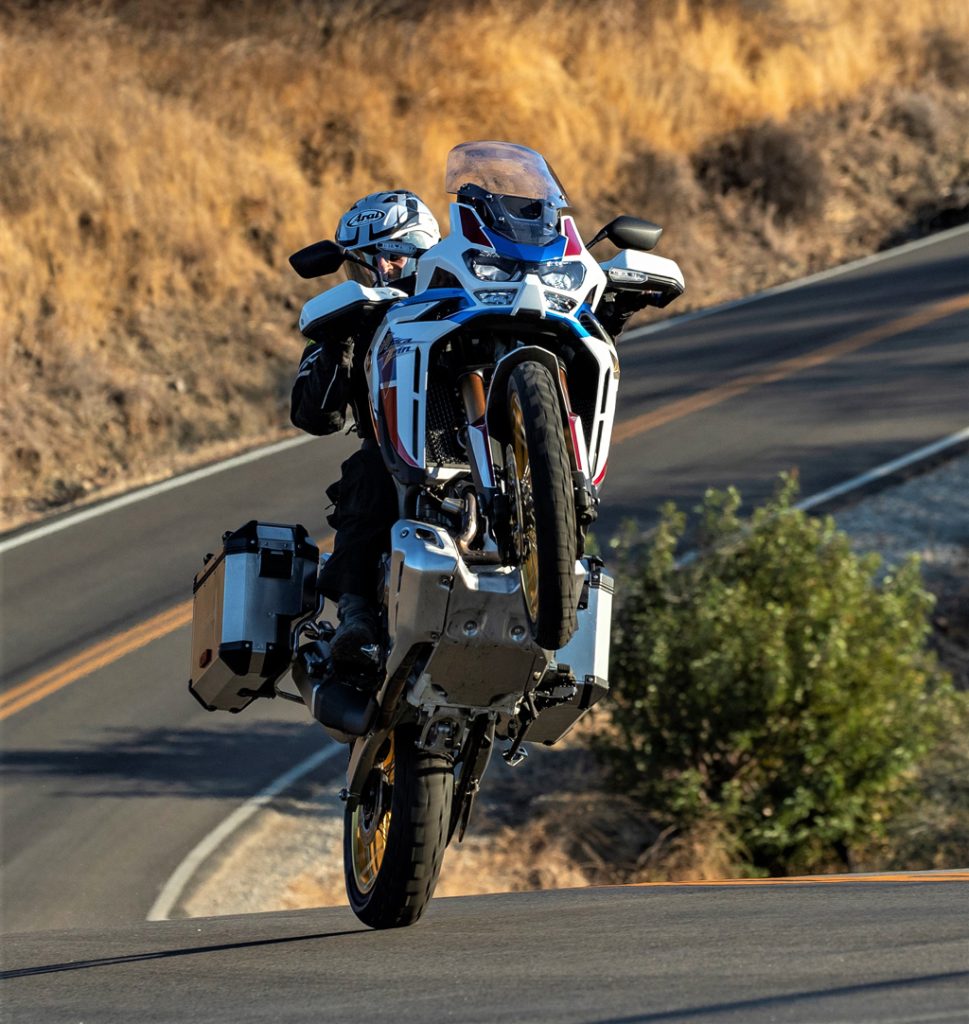
INSTRUMENTS
The Africa Twin’s new TFT screen is highly legible and customizable to three display types, from comprehensive to minimal. The secondary LCD screen below duplicates some info so that it’s accessible when the TFT screen is being used for CarPlay or Bluetooth functions.
The Adventure Sports ES proves to have solid travelling potential. The windscreen provides decent protection in its low position, growing more expansive over its four higher positions. The higher handlebars feel a bit tall, but their position provides extra steering leverage and is ideal when standing on the reasonably wide footpegs that have their cleats covered with rubber inserts. Hand guards supply protection from wind and rocks.
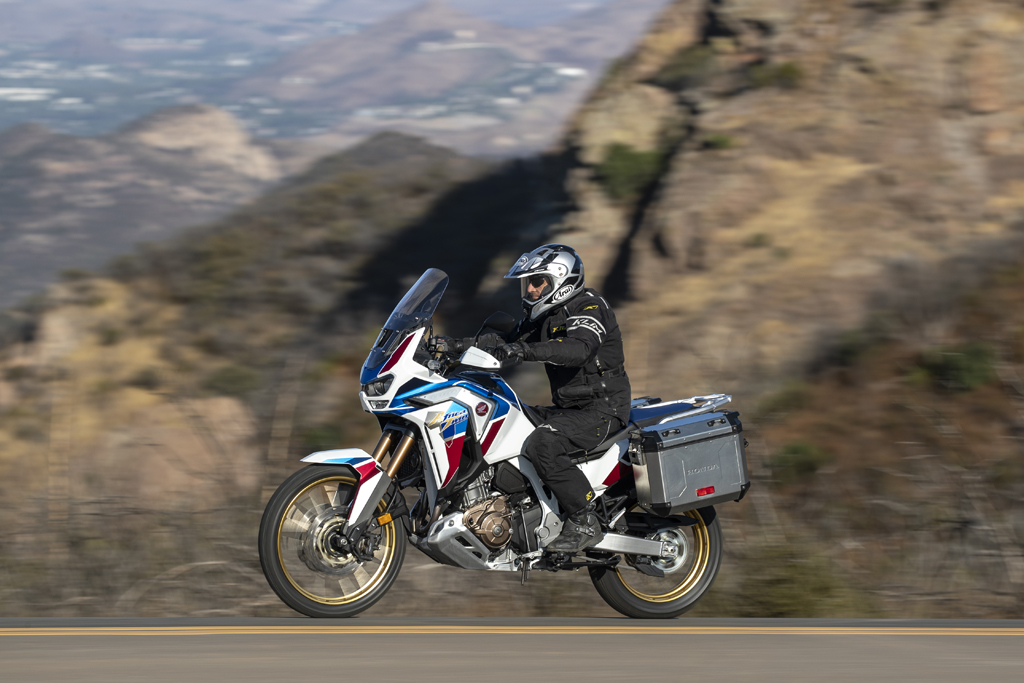
My short inseam was happy to have the stock seat in its lower position, which allowed me to get the balls of both feet on the ground. Tall riders might want to opt for the thicker accessory seat to gain extra legroom during the CRF’s 400 kilometers of potential fuel range.
MSRPs for the Africa Twin begin at $16,499 for the base model, which nicely undercuts its premium competition. The price creeps higher for the Adventure Sports ES, retailing for $20,299.
